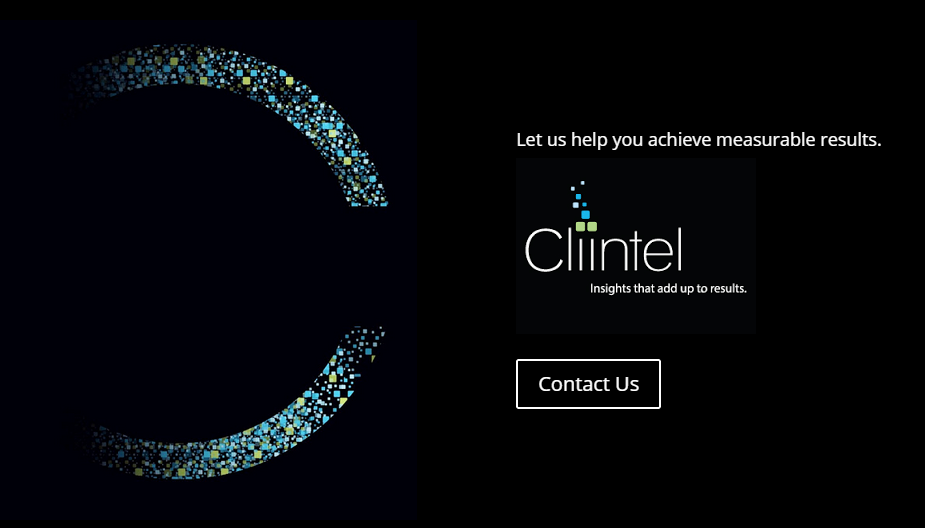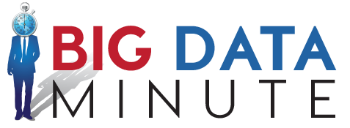
by Stephanie Rabinowotz | Nov 2, 2015 | Case Studies, Measuring Results
The Salvation Army is a Christian based international movement that has been helping those in need since the 19th century. When the Salvation Army began they were in small towns, making it easy to determine who was in need of their assistance. Now that the movement is international, it is much more complicated to determine the areas most affected by poverty.
The Salvation Army has recently teamed up with the Indiana University Lilly Family School of Philanthropy to combine the Salvation Army’s service data with the University’s analytics to provide a more accurate Human Needs Index. The Human Needs Index shows us where there is the most poverty and breaks that poverty down into different indicators that allow us to best assist those in need. The Human Needs Index is based on seven needs variables consisting of meals, groceries, housing, clothing, furniture, medical bills, and energy bills.
Instead of determining if an area is impoverished based on income, the Human Needs Index takes it to a different level by finding out why the area is struggling and how they can best help each individual family. This deeper look prevents organizations with good intentions assisting people in ways they don’t need help, such as giving a family clothes when they really need help with their medical bills.
With the Salvation Army providing large amounts of data on those in need and the University analyzing it to break it down into specific conditions, we are getting a much more accurate, almost real time, look at poverty. These insights allow us to track poverty trends affected by public policies and also determine where service efforts are actually making a difference.
The use of Big Data in philanthropy is leading to incredible progress in the mission to aid those in need. There are so many people who need help getting back on their feet and the fact that Big Data is being used to display individual needs is a huge step in the right direction. Many individuals struck by poverty feel as though they are not seen, which is why it is incredibly meaningful when an organization such as the Salvation Army can aid a family with the specific help they need.
Read how else Big Data is helping people! This great article on Energy Usage describes how Big Data can save you money on your next energy bill!

by Rich Benvin | Sep 6, 2015 | Business Intelligence, Case Studies
The broadband marketplace faces constant transformation, attempting to derive as much value as possible from existing infrastructure, while simultaneously adding new products and services. To achieve this the business requires systems that allow routing by service or service combination, matched to the technician skill-set and location. With increased choices, customers have come to demand products and services that are faster, higher quality, and less expensive. Customer loyalty has created a conflict between escalating customer expectations and profit-driven management.
For this purpose one of the largest Multi System Operators (MSO) in the broadband industry sought the assistance of Cliintel to align their workforce management operational support systems.
Focus on the routing group resulted in an increase of two jobs per day that the in-house technicians could complete. In doing so, the market’s dependency upon their contract groups was reduced.
The Client:
The MSO was the nation’s largest provider of cable television, high-speed internet and local telephone service in 14 markets across the country.
The Business Issue:
The Sacramento market has over 40 dispatchers and 300 technicians supporting a market with 350,000+ subscribers. The market utilizes multiple groups of contractors to assist in field installations, service and audit functions. A recent billing system conversion prompted the client to implement CSG’s Workforce Express product to enhance service delivery. The market had limited success in previous implementations of similar projects. The client assigned Cliintel to manage the Sacramento market implementation to increase the probability of success based upon the experience gained in similar markets. Cliintel project managers worked with the Sacramento Management Team to determine where the largest ROI could be achieved, and then to help them achieve it.
The Solution:
Cliintel and the Sacramento Management Team determined that the largest ROI could be achieved by gaining control of the contract groups, as well as their internal technician group. For this project Cliintel utilized their proven implementation methodology referred to as “DART”.
DART is a representation of the four critical areas within a service provider’s Field Operations organization:
- Dispatch
- Administration
- Routing
- Technicians
DART enables all resources working on the implementation project to focus their energies on a specific department while reminding them that there are other departments dependent upon them for success.
Lessons learned from previous implementations had shown that different markets, even though they deliver similar products, have widely varying delivery processes and procedures. Due to the variations, a flexible deployment methodology would be required to increase the adoption of the tool and the resulting return on investment.
During the initial scope meetings, the team determined that the most appropriate manner to approach the implementation would be to focus initially on the Routing group, followed by the Dispatch group, and ending with the service technicians, with the appropriate administrative aspects being handled within these three groups. This approach would satisfy the market’s greatest needs by increasing the client’s control over their contract groups and their internal technician group. In addition, it was believed that by winning over the highly visible Routing group first, the remainder of the groups would align themselves quickly thereafter.
Within the implementation process, even though initial focus was given to the routing group, the technicians were given their new handheld devices at the beginning of the process. That way the technicians could become familiar with the capabilities inherent to the new handheld solution by the time the system was installed.
The Results:
By managing the implementation with a process that allowed for flexibility based upon the client’s needs, the approach maximized the ability of the Sacramento market to succeed. Focus on the Routing group resulted in an increase of two jobs per day for the in-house technicians. In doing so, the market’s dependency upon their contract groups was reduced. The net result was an increase in control on the available work to be done.
Also, since the technicians had familiarized themselves with the handheld devices, they began utilizing the wireless functionality provided by the WFX product before the “turn-up” of the devices. In doing so, the technicians realized that they no longer were dependent upon the existing paper Work Order system. Thus, the technicians helped push the implementation of the project.
Even though the focus of the initial project was on the routers, it was the technicians that took advantage of the implementation. In doing so, it increased the buy-in to the system and ultimately added to the success of the implementation.
We’re proud to help our clients solve tough problems and achieve stunning results. To see what kind of big data results Cliintel.com can deliver for you, please Call 720-200-3001.


by Rich Benvin | Aug 26, 2015 | Big Data, Case Studies, Creating Competitive Advantage
Many companies come up with a great ideas that they know will help a particular industry, but then struggle to formulate a plan to access and acquire customers in the new market. Cliintel is comprised of experts with diverse expertise in a wide variety of fields that can be quickly leveraged by our clients to ensure their successful entry into new markets and industries.
The Client:
A leading innovator in the Radio Frequency Identification (RFID) business had been working with a diverse client base that ranged from aerospace to the medical industry. They had recently identified the retail vertical as a potential new market for their products.
The Business Issue:
The primary use of RFID technology is for inventory tracking. The client wanted to broaden their reach by using their software solution to solve issues within the retail space. They had built a solution to track the relationships of products within a store location, providing real-time data on customer behavior and interaction with the products. The problem was trying to identify a client who would be willing to “beta-test” to validate the benefits from the solution and provide references.
Cliintel’s research enabled the client to complete product development ahead of schedule and successfully enter the retail market by successfully implementing their solution in record time while simultaneously acquiring new, referenceable customers.
The Approach:
Cliintel took a broad view of the retail industry, looking for beta-test candidates with needs that aligned with the primary uses of the RFID technology and who would realize value from the innovation. The industry was examined collectively and objectively to identify specific candidates who prioritized relationship marketing performance metrics, had large supply-chains and were targeting both internal and external loss-preventions programs.
Cliintel’s research enabled the client to complete product development ahead of schedule and successfully enter the retail market by successfully implementing their solution in record time while simultaneously acquiring new, referenceable customers.
The Solution:
Cliintel presented three key retail venues that they felt would benefit most from the client’s solution. Specific requirements for the solution were identified for each venue – ranging from pure inventory tracking to relationship marketing. After quickly conducting extensive market research, Cliintel identified specific companies that needed an inventory solution and possessed the willingness to participate in the beta-test.
The Project Results:
Cliintel’s research enabled the client to complete product development ahead of schedule and successfully enter the retail market by successfully implementing their solution in record time while simultaneously acquiring new, referenceable customers.
We’re proud to help our clients solve tough problems and achieve stunning results. To see what kind of big data results Cliintel.com can deliver for you, please Call 720-200-3001.

by Bill Decker | Aug 24, 2015 | Big Data, Case Studies
From the government offices, Federal IT officials say real-time analytics of big data can help reduce the federal budget by at least 10 percent annually, or about $1,200 per citizen, by detecting improper health care payments before they occur, according to the TechAmerica survey. If we can save that money, we can also save sickness and lives!
Yet, despite all the real and potential benefits of big data analytics, federal and state IT officials also cite several barriers to adoption, including privacy concerns, the expense of new tools, lack of clarity about big data’s return on investment, and the time it can take to extract queries from traditional databases in a timely manner. There are data podcasts which discuss this more deeply.

by Bill Decker | Aug 5, 2015 | Case Studies, Creating Competitive Advantage
Process Redesign and Software Enhancements Reduces Operating Expenses
Customer service is critical for the success of most companies. But it comes at a cost. For a leading provider of industrial-strength hardware, software and services this cost had become inordinately high due to a business decision to “give service” or support to customers regardless of entitlement. Cliintel was asked to assess the situation, create new processes to correct the problems in the software which had been developed for the European/Middle East and Asian (EMEA) markets, and then to oversee its deployment in the Americas.
The Client:
The Client is a leading provider of industrial-strength hardware, software and services that power the internet with installations in more than 100 countries.
The Business Issue:
The client had reached an impassable situation. During a period of quick expansion, both the database available to the call center representatives and the tools needed to verify customer entitlement for services contained significant inaccuracies. In an attempt to address these issues, the client created a policy of providing unnecessary service to assuage customers and attempt to maintain customer retention. The customers soon became accustomed to contacting the call center and simply demanding service which often resulted in a technician being dispatched to their location to resolve issues. This practice was barely maintaining customer satisfaction levels, but was creating unnecessary costs in excess of $4 million per quarter.
The company needed a solution to the systemic problems of inaccurate customer information. In other words, the client needed a tool that would quickly and accurately determine the entitlement status for any given customer 24×7, 365 days a year as well as provide an action plan for correcting, uplifting or abandoning customers who were out of their warrantee or support period.
The project was completed under budget, within the 45 day schedule, with the client realizing a savings of $4 million in the 1st quarter, eliminating the unnecessary costs previously being incurred.
The Challenge:
The client database mining algorithm had been developed in the EMEA markets for the purpose of handling such a problem. The challenge was to deploy this tool in the Americas, where the customer base was 25 times the size of the EMEA markets currently using the tool, with a deadline looming in 45 days.
The Solution:
The solution was to gather stakeholders, agree upon a level of service and negotiate with the Sales and Service Delivery organizations on an acceptable response time for corrective action. Then they could proceed to development to rapidly enhance the EMEA product for the Americas and deploy it in 45 days.
Due to the incredibly short deadline Cliintel employed a strategy to break down the processes into manageable units. A Rational Unified Process (RUP) model was used to complete the development of the enhanced software, followed by a Change Acceptance Process (CAP) developed with the stakeholders to ensure a smooth and efficient transition to deployment.
The Project Results:
The project was completed under budget, within the 45 day schedule, with the client realizing a savings of $4 million in the 1st quarter, eliminating the unnecessary costs previously being incurred.
We’re proud to help our clients solve tough problems and achieve stunning results. To see what kind of results Cliintel can deliver for you, please visit www.cliintel.com or e-mail askcliintel@cliintel.com.

by Rich Benvin | Aug 4, 2015 | Case Studies, Creating Competitive Advantage
Through an aggressive merger and acquisition phase, one of the broadband industries largest Multi-System Operators (MSO), found themselves needing help in systematically migrating their subscriber billing and workforce automation systems. To reach this goal, the client enlisted the help of experts at Cliintel to both maintain service levels as well as improve efficiency in the field.
The Client:
The MSO was the world’s largest provider of cable television, high-speed internet and local telephone service to 14 markets across the United States.
The Business Issue:
The Atlanta market consisted of over 100 dispatchers and over 500 technicians, all serving 600,00+ subscribers. This market utilized multiple groups of contractors to assist in field installations, service and audit functions. Atlanta was also the last of nine markets to be on an older, outgoing Workforce Management tool. Severe contractual penalties were associated with an extensive data center being kept on-line to support these tools. If the system was not shut off within 60 days from project initiation, the previously pro-rated cost to the market would exceed $1 million a month. The problem was particularly precarious in this case because the Atlanta market division of the MSO was highly dependent on the outgoing system that was actively utilized by the routers, dispatchers and field technicians.
Due to the success of this migration, increases in the efficiency of in-house labor allowed for the reduction of contract labor, allowing the MSO to realize an immediate profit of over $5 million, with a gross savings of over $300,000 in the first 90 days.
The Approach:
The Atlanta market’s staff had grown accustomed to change and transition. The decision to utilize Cliintel was based upon the team’s ability to execute the project plan utilizing the best practices identified from lessons learned from the prior deployments to successfully overcome the risks and issues brought to bear during the implementation. The urgency to sunset the old system and avoid the associated costs was extreme, mandating that the deployment of the new solution be on time, on budget, and fully available in production. It also had to be deployed with performance
reporting and cost/benefit trending analysis capabilities.
The Solution:
Discovery meetings were held by the project team to gather information from the market’s staff, vendors and management. The meetings engaged upper management in making high-level decisions on configuration, and to gain buy-in. Meetings between upper and middle management were held to assess criteria for these two levels and to achieve goal alignment between upper and middle management. Finally, meetings were held with front-end users and supervisory staff.
The goal of the meetings was to properly size the level of effort required to deploy the work force automation platform into this system across the four key departments: routing, dispatch, field technicians, and administrative.
Normally, training was held in a phased format utilizing one team of trainers to work through each department. In this instance, training was required in parallel in a “just-in-time” fashion. This approach required exacting coordination between the project management staff, market staff from dispatch, routing and field supervisors and both the corporate and market training staffs. Coordination would also have to occur in parallel with the wireless hardware and service provider, as well as the vendor for the work force automation platform itself.
The field, including that day’s routing, dispatch and all phone, radio and internet communication, would have to make a hard cut from the old workforce automation system, cellular phone and radio, to one handheld device in the same day. Technicians would hand in their hand held device on their way into training and leave to deliver their portion of the day’s production, with a new handheld device, having been qualified as proficient – all in the same shift.
The Results:
Cliintel was highly successful in coordinating the entire span of this endeavor and moved from field service to implementation and utilization by the network maintenance and outage dispatch teams. The rapid implementation schedule throughout the affected departments, and fast utilization of the handheld devices were attributable to unwavering executive sponsorship with consistent reinforcement. Logical, focused processes helped to achieve buy in, goal-alignment, and participation in training and meetings where the players were able to see the commitment from upper management. If resistance was noted, issues could be addressed on the spot and be immediately resolved.
The solution was deployed on time and under budget. All departments were successfully using the new system on day one. The outgoing product was smoothly replaced and the client was able to shut down the data center without incurring the $1 million per month penalty.
Due to the success of this migration, increases in the efficiency of in-house labor allowed for the reduction of contract labor, allowing the MSO to realize an immediate profit of over $5 million, with a gross savings of over $300,000 in the first 90 days.
We’re proud to help our clients solve tough problems and achieve stunning results. To see what kind of results Cliintel can deliver for you, please visit www.cliintel.com or e-mail askcliintel@cliintel.com.













Recent Comments